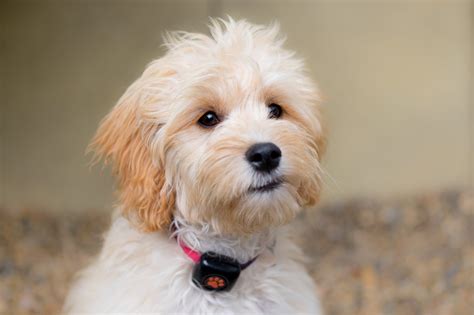Discover hypoallergenic dog breeds, grooming tips, and ways to reduce allergens at home. Manage allergies with the right hypoallergenic breed.
Understanding Canine Allergens
Understanding Canine Allergens
Canine allergens are substances that can trigger allergic reactions in some people. These allergens can be found in a dog’s dander, saliva, and urine. When these substances come into contact with a person who is allergic, it can cause symptoms such as sneezing, coughing, wheezing, and itching. It’s important to note that the allergen is not the dog’s fur itself, but rather the proteins found in the dander, saliva, and urine.
One of the most commonly known canine allergens is a protein called Can f 1, which is found in a dog’s saliva. Another major allergen is Can f 5, which is predominantly found in a dog’s dander. These allergens can become airborne and settle on surfaces in the home, making it difficult for allergy sufferers to avoid them.
It’s also worth mentioning that some dog breeds may produce fewer allergens than others. This has led to the development of hypoallergenic dog breeds, which are breeds that are less likely to trigger allergic reactions in people who are sensitive to dog allergens. Understanding canine allergens is crucial for allergy sufferers who are looking to find a dog that they can live comfortably with.
Hypoallergenic Dog Breeds
When it comes to choosing a dog for allergy sufferers, it’s important to consider hypoallergenic dog breeds. These breeds are known for producing fewer allergens, making them a better option for people with allergies. Some popular hypoallergenic dog breeds include the poodle, bichon frise, and schnauzer. These breeds typically have non-shedding coats, which means they produce less dander, a common allergen.
Another option for allergy sufferers is the Portuguese water dog, which has a curly coat that doesn’t shed much. This makes them a great choice for individuals with allergies. Additionally, the Maltese and Yorkshire terrier are also considered hypoallergenic due to their minimal shedding and low dander production.
If you’re looking for a larger hypoallergenic breed, consider the Afghan hound or the giant schnauzer. These breeds have luxurious coats that don’t shed much, making them a suitable option for allergy sufferers who prefer bigger dogs. Keep in mind that while these breeds are considered hypoallergenic, individual reactions may vary, so it’s important to spend time with the dog before making a decision.
Characteristics of Hypoallergenic Dogs
Hypoallergenic dogs have certain characteristics that make them suitable for allergy sufferers. These dogs produce fewer allergens such as dander and saliva, which are common triggers for people with allergies. Their coats are also less likely to shed, reducing the amount of allergens in the home. This makes them a great choice for those who want to have a dog but are concerned about allergens.
In addition, hypoallergenic dogs often have a single-layered coat or curly hair. This type of coat doesn’t shed as much as the double-layered coat of non-hypoallergenic breeds, which helps to minimize the spread of allergens. Some breeds also produce less oil on their skin, which can further reduce the amount of dander they produce.
Furthermore, hypoallergenic dogs are known for being less smelly than other breeds. This is because their coats don’t trap as much odor and they produce less oil, making them a great option for allergy sufferers who are sensitive to pet odors. These are just a few of the characteristics that make hypoallergenic dogs a popular choice for those with allergies.
Reducing Allergens in the Home
One of the biggest challenges for allergy sufferers who have dogs is keeping allergens at bay within their own homes. This can be especially difficult for those with sensitive respiratory systems, as pet dander can trigger sneezing, coughing, and other uncomfortable symptoms. However, there are several strategies that can be employed to reduce the level of allergens in the home and make it a more comfortable environment for both the allergy sufferer and their furry friend.
First and foremost, regularly cleaning and vacuuming the home is crucial in minimizing the presence of pet dander. This includes washing bedding and curtains, dusting surfaces, and vacuuming carpets and upholstery. Investing in a high-quality HEPA filter vacuum can also help to effectively trap and remove allergens from the environment.
Another important step in reducing allergens in the home is to create designated pet-free zones within the living space. This can include areas such as the bedroom or certain pieces of furniture where the dog is not allowed to go. By limiting the areas where the dog can roam freely, it can help to minimize the spread of dander and reduce allergic reactions.
Grooming Tips for Allergy Sufferers
Grooming Tips for Allergy Sufferers
When it comes to grooming your dog, it’s important to consider the needs of allergy sufferers. Hypoallergenic dog breeds are a great option for those with allergies, but proper grooming is still essential to minimize the spread of allergens. Regular grooming can help reduce the amount of dander and saliva that can trigger allergic reactions in sensitive individuals.
Allergy sufferers should consider grooming their hypoallergenic dogs at least once a week to keep their coat clean and free from allergens. This can involve regular brushing, bathing, and trimming to prevent the build-up of dander and other potential allergens. It’s important to use gentle, hypoallergenic shampoos and conditioners to avoid exacerbating allergies during the grooming process.
Additionally, grooming your hypoallergenic dog in a well-ventilated area and using proper grooming tools, such as vacuum attachments and air purifiers, can further help reduce the spread of allergens in the home. By following these grooming tips, allergy sufferers can enjoy the company of a hypoallergenic dog without compromising their health.
Choosing the Right Hypoallergenic Breed
When considering a hypoallergenic dog breed, it’s important to first consult with an allergist to determine which specific allergens trigger your reactions. Once you have a better understanding of your allergies, you can begin the process of choosing the right hypoallergenic breed that will be best suited for your needs.
When looking for a hypoallergenic breed, it’s important to consider the dog’s coat type. Breeds with non-shedding coats are often recommended for allergy sufferers, as they are less likely to spread dander and other allergens around the home. Additionally, breeds with single coats or curly coats tend to produce less dander, making them a great option for those with allergies.
It’s also crucial to spend time around the specific breed you are considering to ensure that you do not have a reaction. Many breeders and shelters allow potential owners to spend time with the dogs to see if any allergic reactions occur. This can be a helpful way to determine if a particular breed is suitable for you. Remember to consider the size and energy level of the breed, as well as their compatibility with your lifestyle. By taking these factors into account, you can make an informed decision when choosing the right hypoallergenic breed for you.
Managing Allergies with a Dog
Living with allergies can be a challenge, especially for individuals who are passionate about owning a furry friend. Many people assume that having allergies means that they cannot enjoy the companionship of a dog, but this is not necessarily true. While no dog breed is completely hypoallergenic, there are certain breeds that produce fewer allergens, making them a suitable option for allergy sufferers.
When managing allergies with a dog, it is important to choose a breed that is known to produce fewer allergens. While the level of allergens can vary from individual to individual, some hypoallergenic dog breeds that are often recommended for allergy sufferers include the Poodle, Portuguese Water Dog, Bichon Frise, and Maltese. These breeds tend to produce less dander and shed less, making them a suitable option for individuals with allergies.
In addition to choosing the right breed, there are several other steps that can be taken to manage allergies with a dog. Regular grooming and bathing can help to reduce allergens in the home, as it can limit the amount of dander and hair that is shed. Additionally, keeping the home clean and using an air purifier can help to reduce allergens in the environment, creating a more comfortable living space for allergy sufferers.
Frequently Asked Questions
What are hypoallergenic dogs?
Hypoallergenic dogs are breeds that produce fewer allergens, making them a better option for allergy sufferers.
Are there truly hypoallergenic dogs?
While no dog breed is completely hypoallergenic, there are breeds that produce fewer allergens and are better suited for allergy sufferers.
What are some examples of hypoallergenic dog breeds?
Some hypoallergenic dog breeds include poodle, bichon frise, shih tzu, maltese, and Portuguese water dog.
Do hypoallergenic dogs require special grooming?
Yes, hypoallergenic dogs often require regular grooming to maintain their coat and reduce allergens.
How can allergy sufferers minimize reactions to dogs?
Allergy sufferers can minimize reactions to dogs by keeping the home clean, using air purifiers, bathing the dog regularly, and seeking medical advice.
Are hypoallergenic dogs suitable for families with children?
Yes, many hypoallergenic dog breeds are good with children and can be a great addition to a family.
Can allergy testing help in selecting a hypoallergenic dog?
Yes, allergy testing can help individuals identify specific allergens and choose a hypoallergenic dog that is less likely to cause a reaction.





